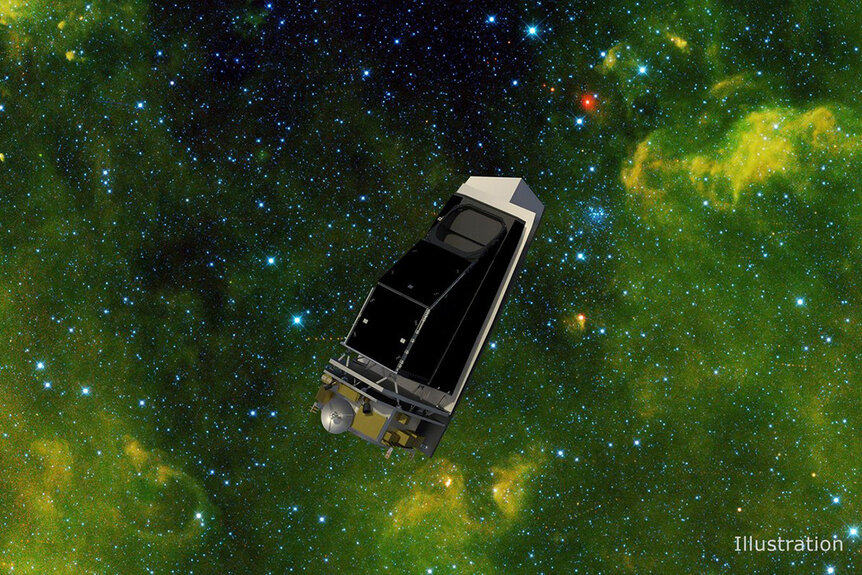Create a free profile to get unlimited access to exclusive videos, sweepstakes, and more!
NASA begins construction on NEO Surveyor, a next-gen asteroid hunter
Our planetary security cameras are about to get an upgrade.

There are more than 1.1 million known asteroids in the solar system. Most of them are in the asteroid belt, a loose collection of bits and bobs left over from the formation of the Sun and planets, but every once in a while, one of them goes rogue. You could ask the dinosaurs about it if any of them were still around. We know they’re out there and we know one could show up at any time. The thought probably doesn’t take up a lot of real estate in your waking mind, but it’s there, a low level anxiety that the universe could decide to hit Earth’s reset button whenever it wants.
It's an idea which was explored beautifully in the 2012 film Seeking a Friend for the End of the World (now streaming on Peacock). The movie opens on a world in the path of an asteroid 70 miles wide. A radio news broadcast announces that a mission to destroy the asteroid has failed and it will impact the planet in three weeks’ time. Neighbors Dodge Peterson (Steve Carell) and Penny Lockhart (Keira Knightley) embark on one last adventure before the final curtain call.
RELATED: Mile-wide asteroid found hiding in the Sun's glare
It’s a heart wrenching story of hope in the face of annihilation, but as far as reality goes, an even better story would be one in which our species isn’t wiped out by a rock. That’s the aim of NASA’s upcoming NEO Surveyor mission, a 50-centimeter-diameter space-based telescope that will hunt for asteroids in infrared wavelengths.
Recently, NASA succeeded at changing the orbit of an asteroid by smacking it with a spacecraft. The DART mission served as a proof of concept that we could mount a defensive campaign in the event that something lethal finds its way to our door. But before we can deal with a killer space rock, we need to be able to see it coming.
NEO Surveyor is a proposed space telescope purpose designed for seeking out and tracking potentially hazardous near-Earth objects. The NASA Authorization act of 2005 dictates that NASA identify and characterize at least 90% of objects larger than 140 meters across which come within 30 million miles of our orbit. At that size, an impact wouldn’t threaten our species, but it would be a particularly bad day for anyone near the point of impact. NEO Surveyor will supplement the already existing array of instruments both on and off planet, keeping an eye out for anything in our path.
“Ground-based telescopes remain essential for us to continually watch the skies, but a space-based infrared observatory is the ultimate high ground that will enable NASA’s planetary defense strategy,” said Lindley Johnson, NASA’s Planetary Defense Officer at the Planetary Defense Coordination Office, in a statement from JPL.
According to NASA, the project recently passed technical and programmatic review and is moving into final design and fabrication stages, and some of the actual construction work has already begun. Once it passed review on Nov. 29, instrument development kicked into gear. Already, the large radiators which will help the telescope to remain cool are being manufactured and work on the mirror has begun. Other basic components like strut supports are also being made while development of the actual instruments continues.
RELATED: Dinosaur-killing asteroid triggered a global tsunami with mile-high waves
Once it’s built, NEO Surveyor will park itself at Earth’s L1 Lagrange Point, roughly a million miles away from the planet. That spot was chosen for its position between the Earth and the Sun. From there, we can use it to look for objects further out, either leading or trailing our orbit, as well as look for hard-to-find objects hiding in the glare of the Sun.
From that vantage point, NEO Surveyor will search the skies looking for infrared light coming from otherwise invisible objects. While asteroids don’t emit their own visible light and the amount they reflect is tiny, they do heat up in the presence of sunlight, and that heat is visible as infrared light. Infrared wavelengths can be difficult to see from the ground, due to interactions with the Earth’s atmosphere, which is why a space-based telescope will be such an asset to our planetary fortifications. NEO Surveyor is basically the Predator of the skies, using its heat vision to seek out unsuspecting targets.
NEO Surveyor is planned for launch in 2026. Its 5-year primary mission has a goal of identifying two thirds of objects within the aforementioned size and location guidelines. A firm launch date has not yet been determined and we’ll likely have to wait until the telescope is constructed to get a more concrete idea of launch windows. Considering the potential consequences of not shoring up our defenses, it can’t launch soon enough.
In the meantime, you can experience the apocalypse vicariously in Seeking a Friend for the End of the World or Asteroid vs Earth, both streaming right now on Peacock!



























